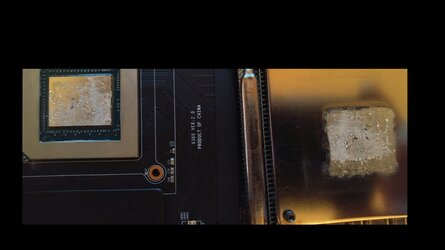- Joined
- Jul 20, 2002
I have a MSI 1080Ti Duke that I tried using thermalgrizzly conductonaut liquid metal on. I carefully cleaned the GPU die and the cold plate several times with carb cleaner until the cotton tipped swabs came back clean. I then applied two coats of clear nail polish to the SMD's surrounding the GPU die and made sure none of it got on the die or the surrounding shim.
I applied the conductonaut to the GPU surface until it was coated with a fine coat then did the same thing with where I thought the die contacted the cold plate. After all this I re-assembled the heatsink w/the PCB and slowly tightened down the spring-loaded screws on back in a criss-cross pattern.
When I fired up the card it runs much hotter than it did with Phanteks' ph-ndc TIM that I had on before. Did I not put on enough conductonaut?
I applied the conductonaut to the GPU surface until it was coated with a fine coat then did the same thing with where I thought the die contacted the cold plate. After all this I re-assembled the heatsink w/the PCB and slowly tightened down the spring-loaded screws on back in a criss-cross pattern.
When I fired up the card it runs much hotter than it did with Phanteks' ph-ndc TIM that I had on before. Did I not put on enough conductonaut?

 Glad you got her fixed Mag's
Glad you got her fixed Mag's